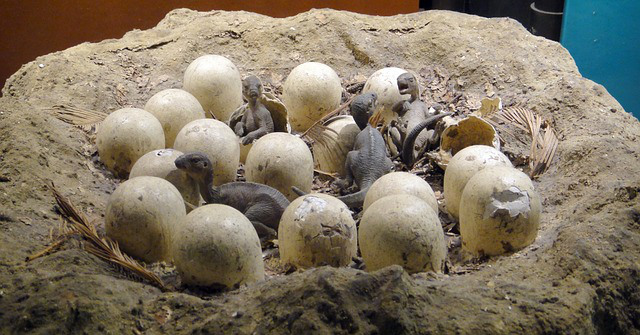-
Tips for becoming a good boxer - November 6, 2020
-
7 expert tips for making your hens night a memorable one - November 6, 2020
-
5 reasons to host your Christmas party on a cruise boat - November 6, 2020
-
What to do when you’re charged with a crime - November 6, 2020
-
Should you get one or multiple dogs? Here’s all you need to know - November 3, 2020
-
A Guide: How to Build Your Very Own Magic Mirror - February 14, 2019
-
Our Top Inspirational Baseball Stars - November 24, 2018
-
Five Tech Tools That Will Help You Turn Your Blog into a Business - November 24, 2018
-
How to Indulge on Vacation without Expanding Your Waist - November 9, 2018
-
5 Strategies for Businesses to Appeal to Today’s Increasingly Mobile-Crazed Customers - November 9, 2018
Hot or not: Were dinos warm-blooded?
Analysis of the chemistry of fossilized eggshells from Mongolia and Argentina revealed under what temperature they formed, the researchers report in the journal Nature Communications.
Advertisement
‘This technique tells you about the internal body temperature of the female dinosaur when she was ovulating, ‘ said Aradhna Tripati, a co-author of the study and a UCLA assistant professor of geology, geochemistry and geobiology. This is the first time when dinosaur eggshells have been used to understand the body temperature and metabolism of dinosaurs.
Of the 32 eggshells the team analyzed, only six were considered well-preserved enough to include in their results: three from oviraptorids in modern-day Mongolia and three from titanosaurids in what is now Argentina.
One was a long-necked titanosaur sauropod, and it indicated a maternal body temperature of about 100 degrees Fahrenheit, comparable to large mammals today.
The smaller dinosaur was substantially cooler, probably below 32C – but was probably able raise its temperature above that of its environment, said the team.
“We can’t take just body temperature and jump to the conclusion that they weren’t cold blooded”, he said, “but combined with other data, it’s consistent with them having a few kind of intermediary metabolism”.
The findings indicate that at least half of all dinosaurs possessed the ability to increase their body temperature through heat sources in the environment, and were more active than living alligators and crocodiles.
A great debate amongst paleontologists for over a century has revolved around whether dinosaurs were warm blooded endotherms like mammals, or cold-blooded ectotherms like modern reptilia. The answer, they say, falls somewhere in between.
A few have suggested that they were cold-blooded and lizard-like; others have propose a warmer, more mammalian, metabolic model.
‘They may have been intermediate – somewhere between modern alligators and crocodiles and modern birds; certainly that’s the implication for the oviraptorid theropods’.
An artist’s rendering of oviraptorid theropods.
This meant they could produce heat internally and raise their body temperature, but not maintain it at a consistently high level.
The researchers aren’t sure why the titanosaurs, which are generally considered more reptile-like and less bird-like than oviraptors, were warmer, but they suggested two possible explanations.
The researchers also analyzed fossil soils, including minerals that formed in the upper layers of soils on which the oviraptorid theropod nests were built.
“The oviraptorid dinosaur body temperatures were higher than the environmental temperatures-suggesting they were not truly cold-blooded, but intermediate”, Tripati says. They examined the behavior of two rare isotopes in calcium carbonate, one of the main ingredients in egg shells.
Advertisement
They studied the extent to which these heavy isotopes clustered together using a mass spectrometer-a technique that enabled them to determine mineral formation temperatures. Eagle notes that C-13 and O-18 cluster more at cold temperatures, and less so at hot temperatures.




























